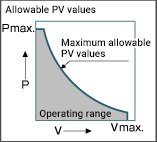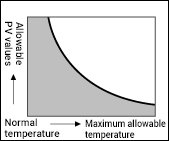This website uses cookies for a better browsing experience.
If you agree to the use of cookies, please click the "Agree" button.
Please refer to the Privacy Policy regarding the use of cookies on this site.
Describes the basic design items useful for designing better OILES bearings.
Selection and Design
Design and required performance features
1. Determination of rough layout
Determine I.D., O.D., length of the bearing, material of the mating shaft and lubrication method.
2. Confirmation of application environment and design specifications
- Normal environment: room temp, atmospheric air
- Special environment: high/low temp., underwater, chemical liquid
3. Study of application condition
- Study allowable P,V, PV value, operating motion, frequency, availability of oiling, environmental conditions, temperature, foreign particles, corrosion resistance and chemical resistance.
- Study dynamic load, static load, impact load, static stress and impact strength.
*Attention should be paid to special environment.
4. Study of configuration design, detail design and standard products
- Confirm and verify material, strength, rigidity, accuracy of housing and the mating shaft.
- Confirm and verify bearing accuracy, clearance, oil grooves and oil holes.
- Study restrictions on bearing material manufacturing. Study possibility of standard products.
5. Selection of primary material
Study whether each design factor falls within each allowable limit. Then decide the material.
6. Confirmation of existing data and characteristics of the bearing
Confirm initial characteristics based on the test data and verify estimated service life and durability of the bearing.
Determination of recommended Oiles bearings
※For customized products and inquires, please contact an Oiles representative.
P / V / PV value

P
Contact pressure P which is obtained by dividing maximum load (w) by projected loading area. (φdxL)
V
Relative velocity between the bearing and the mating shaft.
PV
Product of the contact pressure P and the velocity V. This is the most important value in selecting bearing.
These values are not independent allowable values but are interrelated design values. When designing, values should fall under the range as shown in this graph.
Allowable max. PV value < allowable max. contact pressure : P max. × allowable max. velocity : V max.
Environmental temperature and PV value

Service temperature range listed on the Product page indicates heat resistance derived from the material and the structure of the bearings. Depending on the environmental temperature, it is necessary to design the bearing based on the below conditions.
When a bearing is used in high temperature
- PV value should be set at low level as decline of the frictional characteristics and difficulty in frictional heat diffusion may be anticipated.
- Decline in the hardness of the bearing material should be taken into account.
- Clearance decrease caused by the dimensional change of the bearing and the mating shaft due to heat expansion should be considered.
- In order to prevent sliding at the outer diameter and falling off of the bearing, lock screw or detent screw should be implemented taking press fitting interference decrease caused by stress relaxation of the bearing into account.
When a bearing is used in low temperature
- Study impact strength and brittleness of the bearing material in low temperature.
- Study clearance decrease caused by the heat shrinkage of the inner diameter of the bearing.
- Study decline of the fixed force which is brought about by the decrease in the interference with the housing.
Compared to the metallic bearing, plastic bearing (especially thermoplastic resin material) has the lower melting point and therefore, is prone to heat effect. As heat expansion coefficient is big, attention should be paid in fitting design such as stress relaxation, decrease in clearance due to temperature change and others.
Selection of mating materials
Compared to the metallic bearing, plastic bearing (especially thermoplastic resin material) has the lower melting point and therefore, is prone to heat effect. As heat expansion coefficient is big, attention should be paid in fitting design such as stress relaxation, decrease in clearance due to temperature change and others.
| Bearing | Contact pressure N/mm2{kgf/cm2} |
Material | Hardness | Surface roughness Ra(Ry) |
|---|---|---|---|---|
| Metallic Bearings | ~24.5{250} | Carbon steel for machine structure alloy steel (例:S45C、SNC415、SCM435) In corrosive environment, corrosion resistant steel. (例:SUS304、SUS403、SUS420) |
HB150 or over | 1.6a(6.3s) Less than |
| 24.5{250} ~49.0{500} | Surface hardening treatment such as induction hardening and carburizing should be implemented for the materials described above. | HB250以上 | ||
| 49.0{500} ~98.0{1000} | In addition to surface hardening treatment as above, additional surface treatment such as nitriding treatment and hard chrome plating should be implemented. | HRC50 or over | ||
| Plastic and Multi-layer Bearings | ~49.0{500} | Carbon steel for machine structure alloy steel (S45C、SNC415、SCM435) In corrosive environment, corrosion resistant steel. (SUS304、SUS403、SUS420) |
HB120 or over | 0.8a(3.2s) Less than |
| 49.0{500} ~ 98.0{1000} |
Surface treatment such as induction hardening, quenching by carburizing and hard chrome plating should be implemented for the materials described above. | HRC45 or over |
*For the plastic bearing OILS 480, use mating material of more than HRC 45 hardness.



